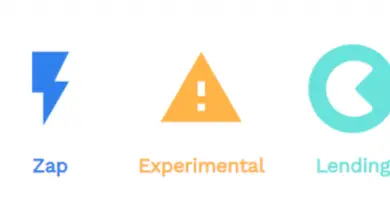What are stablecoins and how to use them? Advantages and disadvantages

If you've done any research on cryptocurrencies, I'm sure at some point you've read or heard the term stablecoin, am I wrong?
The truth is that this concept and others can be quite complicated to understand if a correct explanation is not found.
To help you, I decided to make this article about stablecoins, their types, which ones are the best and why they play a bigger role than it seems in cryptocurrency investing.
Shall we start?
What are stablecoins?
Stablecoins, or in French, stable coins, are what their name suggests, “fixed” or stable priced cryptocurrencies.
For you to understand it better, these are cryptocurrencies that are linked 1 to 1 with the price of another asset, usually a fiat currency (although there may be others).
In this situation, if the price of the common coin increases, the price of the stablecoin will also increase. And in case of a drop, the price of the stablecoin will adjust to this new price.
But how are the two assets related?
The first thing you need to know is that stablecoins do not have a central bank behind them, so it is not governments that adjust the price of the stablecoin to that of their local currency.
Instead, it is the private companies that create the stablecoins that release or retire stablecoins to change their price. Therefore, they need external audits to verify that they are not illicitly generating stablecoins.
Moreover, the price of stablecoins is also subject to the law of supply and demand. Thus, if at any given time there are many people ready to buy these coins, their price will tend to increase and vice versa.

But, if its price is more or less stable, who would want to buy these assets? Your question makes complete sense in the world:
Who would want to buy Tether (a dollar-pegged stablecoin), when they can buy dollars?
Let's imagine that you use an Exchange to invest in Bitcoin, but seeing the development that Cardano is experiencing, you decide to take part of your profits in Bitcoin to invest them in this second crypto-currency.
However, you realize that your current exchange does not accept Cardano, so you open an account on another exchange. Now you can send some of your Bitcoins to this new account, but Bitcoin is a volatile asset, and its price can change a lot in minutes, so you want to secure the amount of money you send to the new Exchange.
In this case, you would only have to exchange part of your Bitcoins for a Stablecoin, for example, Tether, and send them to the Exchange, knowing that when they arrive they will have the same value as when you have them. sent.
For this reason, the price of stablecoins tends to rise when the cryptocurrency market is bearish. Many investors seek refuge in these “volatility-free” cryptocurrencies.
Types of stablecoins
Just as there are hundreds of cryptocurrencies, there are plenty of stablecoins you can turn to if you're looking for a safe haven in your cryptocurrency portfolio.
The main types of stablecoins available are:
- Backed by fiat currency: Today the main stablecoins are those anchored to the fiat currencies that we all know: the US dollar (USD) and the euro (EUR) mainly, but others like the yen (JPY) are also common.
These stablecoins are characterized by a 1:1 value with the currency they are pegged to. The most famous are:
- Tether (USDT) – Backed by US dollars.
- TrueUSD (TUSD) – Backed by US dollars.
- USD Coin (USDC) – Backed by US dollars.
- EURO Stasis ( EURS): supported by euros .
- Brazilian Digital Token (BRZ) – Backed by Brazilian reals.
Although these cryptocurrencies seem stable, the truth is that their value changes. The concept is the same as inflation. A $1 bill in 1950 is still a $1 bill in 2021. The difference is that the amount of assets you can buy with it is different. This way, if the price of the dollar against other currencies goes down, if you have Tether, your money is also affected.
Another disadvantage of these stablecoins is that they are the easiest to manipulate because, even though they are cryptocurrencies, they are centralized. It is a company that is responsible for its creation and distribution, so, after all, you depend on its good faith and auditing processes.
- leaned Commodities: Cryptocurrencies are stablecoins pegged to a fixed amount of a specific commodity(commodities). These commodities stand out because they are not subject to the policies of bureaucrats, but rather to the context of the global economy. The most well-known commodity-indexed cryptocurrencies are:
- Pax Gold (PAGX) – Backed by gold, each PAGX is equal to 1 oz of gold (28,35 grams).
- Digix Gold (DGX) – Backed by gold, each DGX is equal to 0,1 grams of gold.
The company that creates the cryptocurrency must have this raw material in a reserve, so it is quite a safe stablecoin.
- supported by others Cryptocurrencies: Cryptocurrency-backed stablecoins are fairly new and are breaking out quite strongly. However, the cryptocurrency market has little to do with the term “low volatility”, so an overshoot phenomenon is needed to keep its price stable. The most common cryptocurrency-backed stablecoin is:
- Dai (DAI): its price is $1, and throughout history it has kept it fairly stable.
The main advantage of these stablecoins is that they are not controlled by governments or central banks in any way. Its control is governed by smart contracts or smart contracts (ERC-20).
- Not backed by another asset: Stablecoins not backed by another asset, also called seigniorage, do not anchor their value to that of another asset. When they are created, they are assigned a value and the company's own algorithm creates or destroys cryptocurrencies to keep their value stable. The most famous are:
- NuBits (USNBT): Its price hovers around $1, but throughout its life there have been big corrections that have taken it away from this value.
Until recently, there was another fairly widespread unsupported stablecoin, BASIS. However, due to the complexity of the regulations, he left the market by order of the SEC (Securities and Exchange Commission).
Real-world uses
The main reason for the existence of stablecoins is to deal with periods of high volatility with some security. These assets therefore act as a mirror of the fiat currency they replicate. But some of its most practical uses are:
- Cryptocurrency markets also make corrections, so you can use stablecoins to stay out of the market while the price drops and enter when the price rises again. This way, you make sure you don't lose money while waiting for the next uptrend.
- Stablecoins allow you to send money between exchanges without losing value along the way. This way, you can transfer funds to a new wallet without worrying about the price going up or down along the way.
- These currencies are distinguished by their global nature, so no matter where you live, you can buy stablecoins to protect yourself, for example, from inflation in your country if you live in places like Argentina, Venezuela or Cuba.
Best stablecoins
Although the world of cryptocurrencies is moving at high speed and a new cryptocurrency appears every day, currently the best stablecoins are:
- Tether(USDT) – Tether is the most popular stablecoin in the world. In fact, it is one of the most valuable cryptocurrencies and has ERC-20 fiduciary collateral, i.e. it uses smart contracts to offer its collateral.
This cryptocurrency is backed by the US dollar and has a 1:1 ratio, and although this is very common, Tether Limited is surrounded by controversy over whether its operations are legal or not.
- TrueUSD (TUSD) – TrueUSD is a stablecoin backed by the US dollar, so it is quite similar to Tether. The company, on the other hand, seems committed to transparency, and there's not a single piece of information about the company that you can't get. In this case, the ratio to the dollar is also 1:1.
- USDCoin(USDC): As its name suggests, USDCoin is a stablecoin pegged to the dollar at a ratio of 1:1. This was developed by Centre, a company owned by Coinbase and Circle. The internal mechanism of this cryptocurrency is based on ETH(Ethereum) blocks.
- Dai (DAI) – Dai is a stable cryptocurrency backed by other cryptocurrencies. Although it may seem a bit contradictory at first, the Dai algorithm manages to keep its price very stable, even more so than other more common stablecoins.
Pros and cons
Stablecoins have gained a lot of strength in recent years, partly thanks to the surge in popularity of other cryptocurrencies such as Bitcoin, Ethereum, Cardano, XRP… We all know their advantages, but what about of their drawbacks?
 Advantages of stablecoins
Advantages of stablecoins
-
- Stablecoins have the best of the world of fiat currencies and cryptocurrencies: they can be sent instantly, their transaction fees are low, they are secure… But they are also stable.
- They allow many people to take refuge in these assets without having to sell their cryptocurrencies for fiat currency.
- They allow transfers of capital from certain exchanges to others without loss of value.
- They are 100% secure thanks to the adoption of smart contracts as a control method.
 Disadvantages of stablecoins:
Disadvantages of stablecoins:
-
- Stablecoins are centralized assets, the existence of suppliers and companies in charge of creating and destroying tokens is necessary.
- Cryptocurrency-backed stablecoins are stable, but they continue to lose value against other assets if the currency they are pegged to suffers from inflation.
Conclusion
In short, stablecoins are an investment instrument that can be used a lot if used correctly. Moreover, the sector is booming and more and more companies are investing huge sums of money in creating the stablecoin of the future.
The most relevant thing about them is their role as a volatility attenuator in cryptocurrency portfolios. However, they are very useful for making transfers from one exchange to another and for profiting from market declines.
At the moment the offer is somewhat more limited, but there are already many very interesting projects that can be used safely.
But that's not all, there are several types of stablecoin, so whatever your investor profile, you will be able to find the one that suits you.




